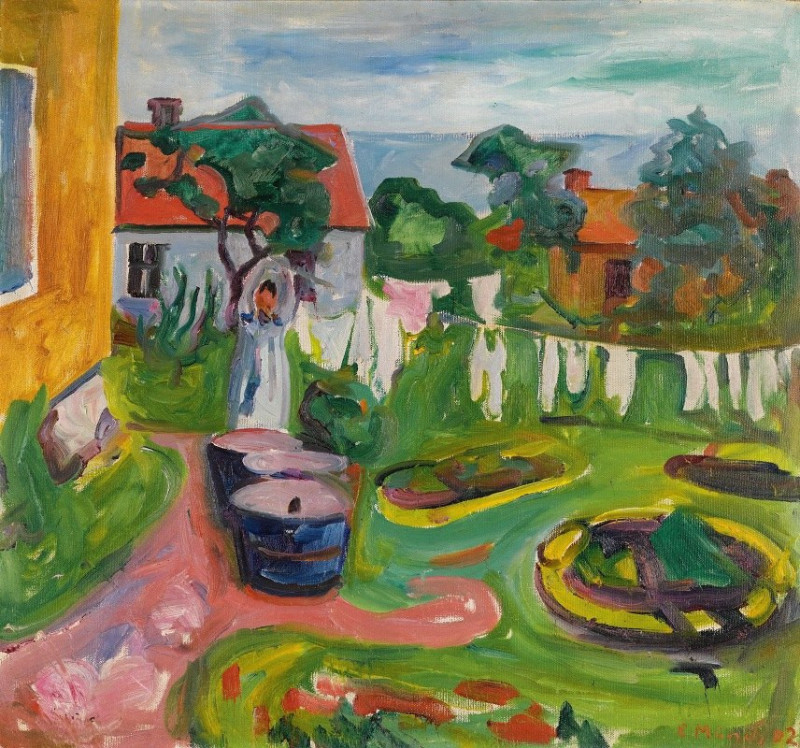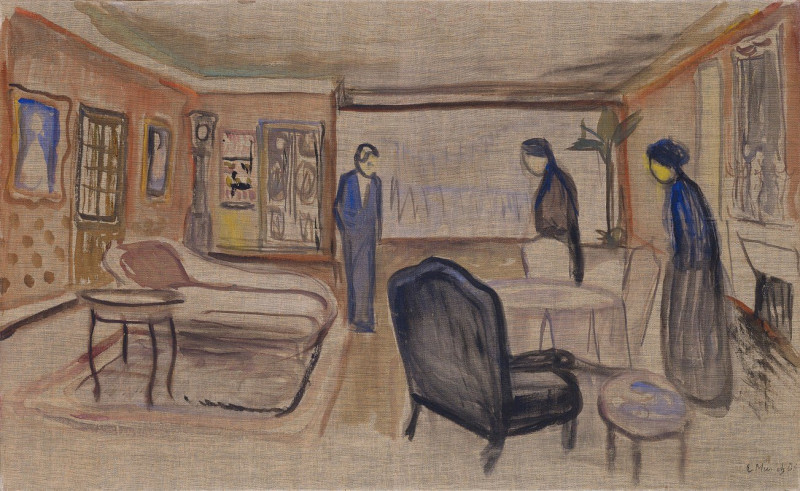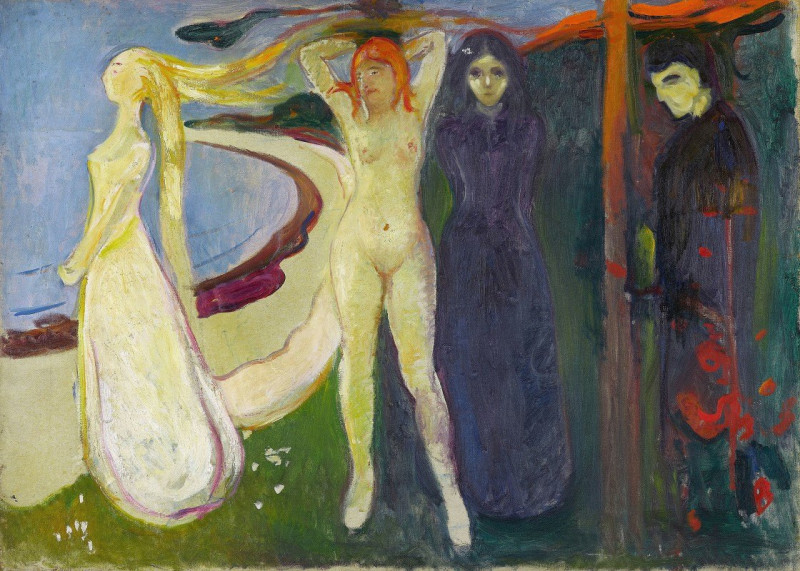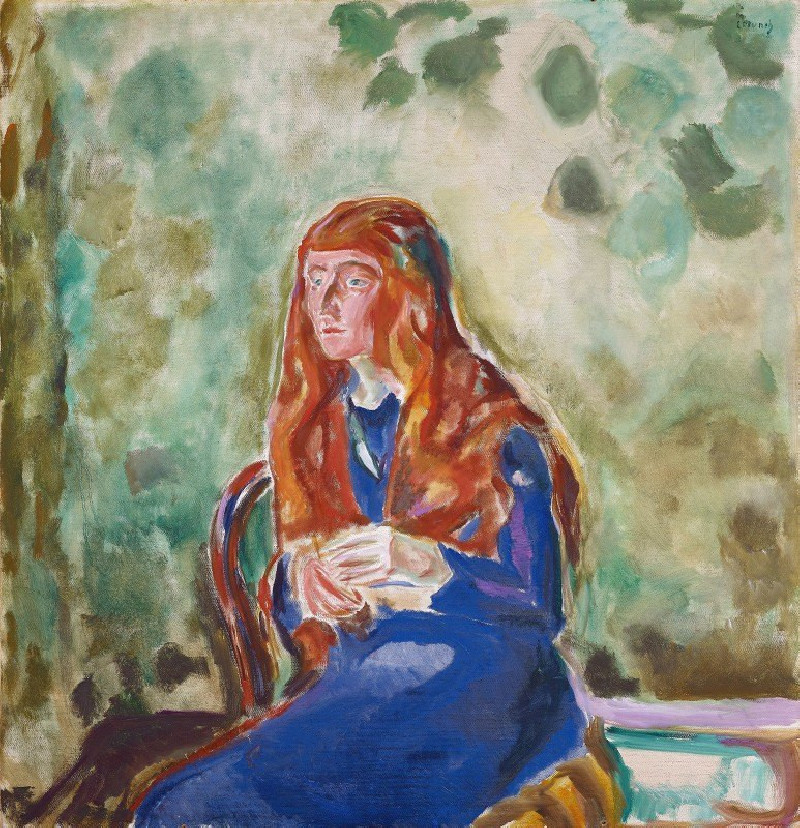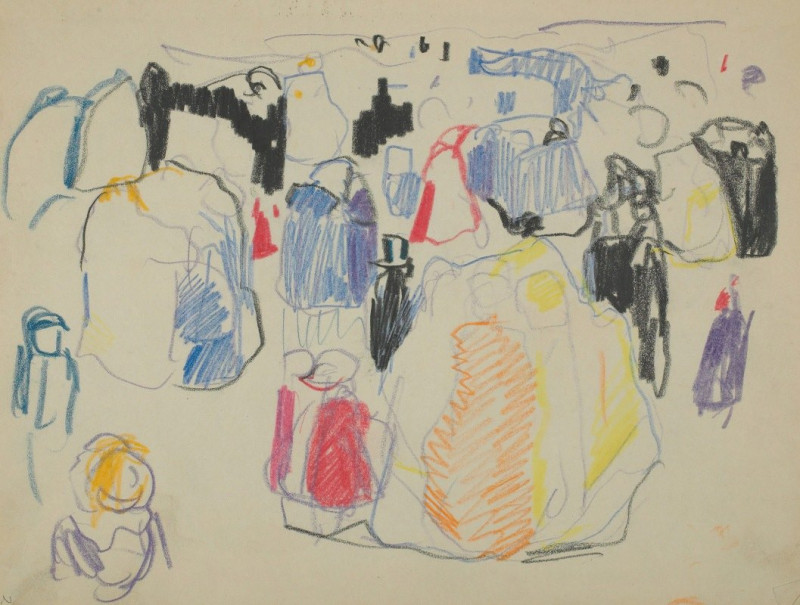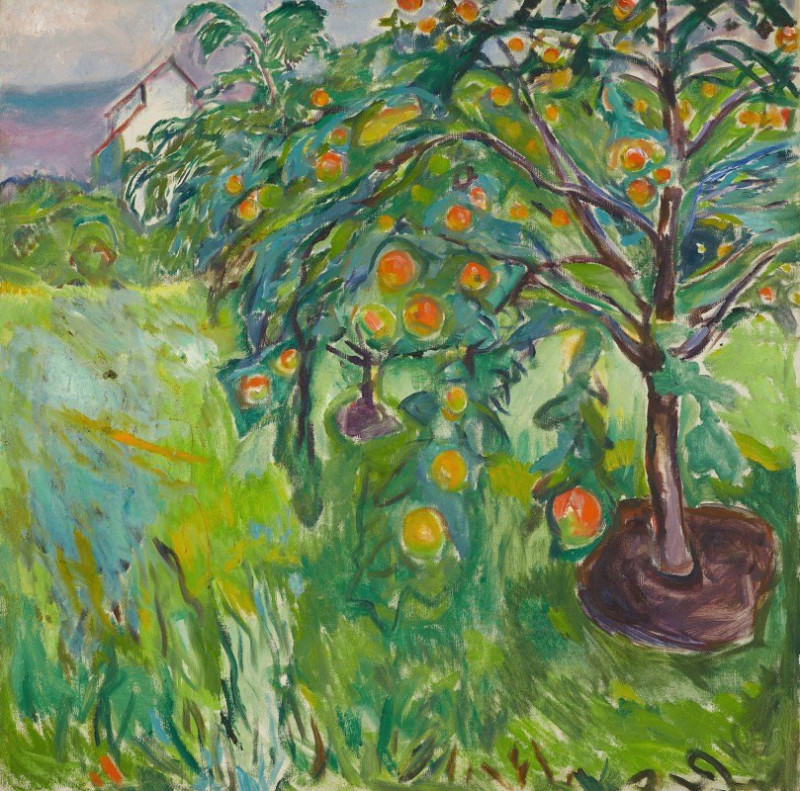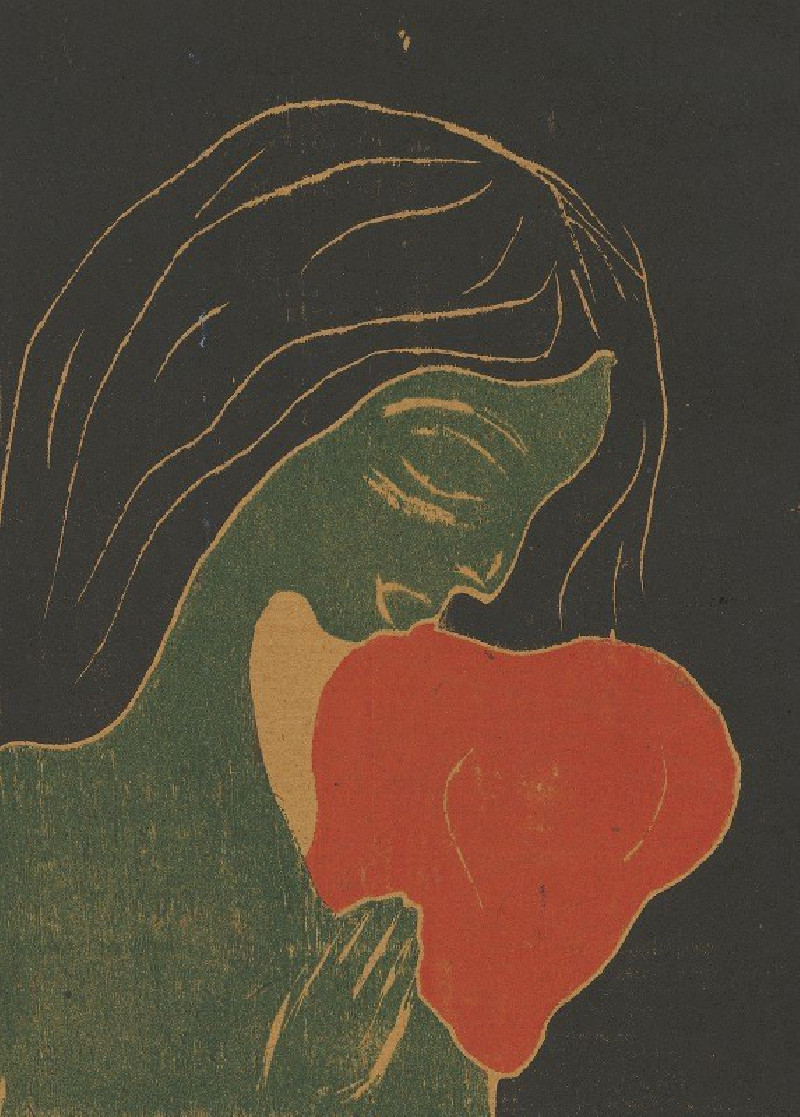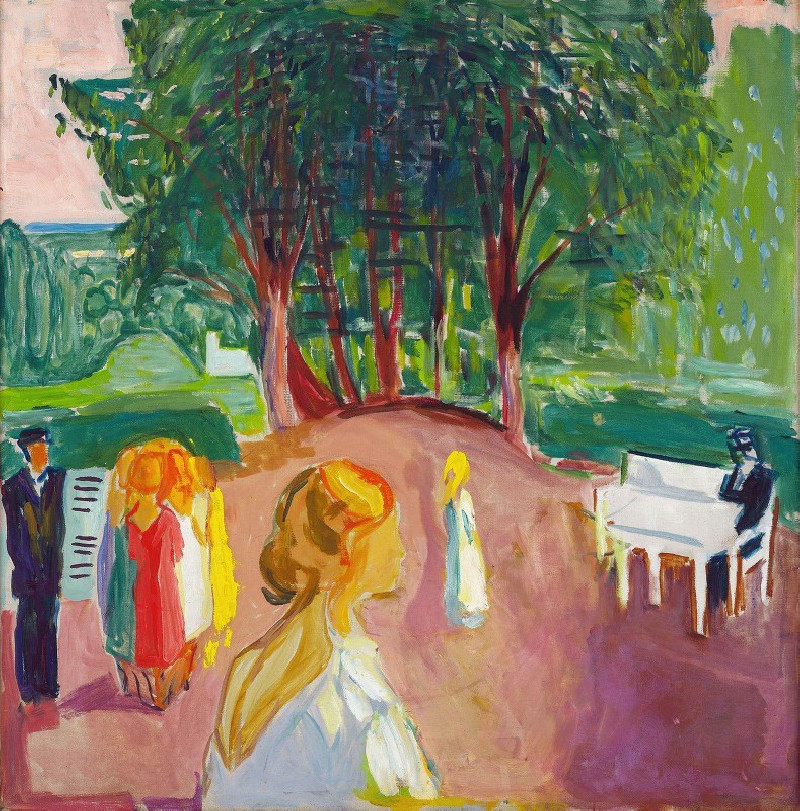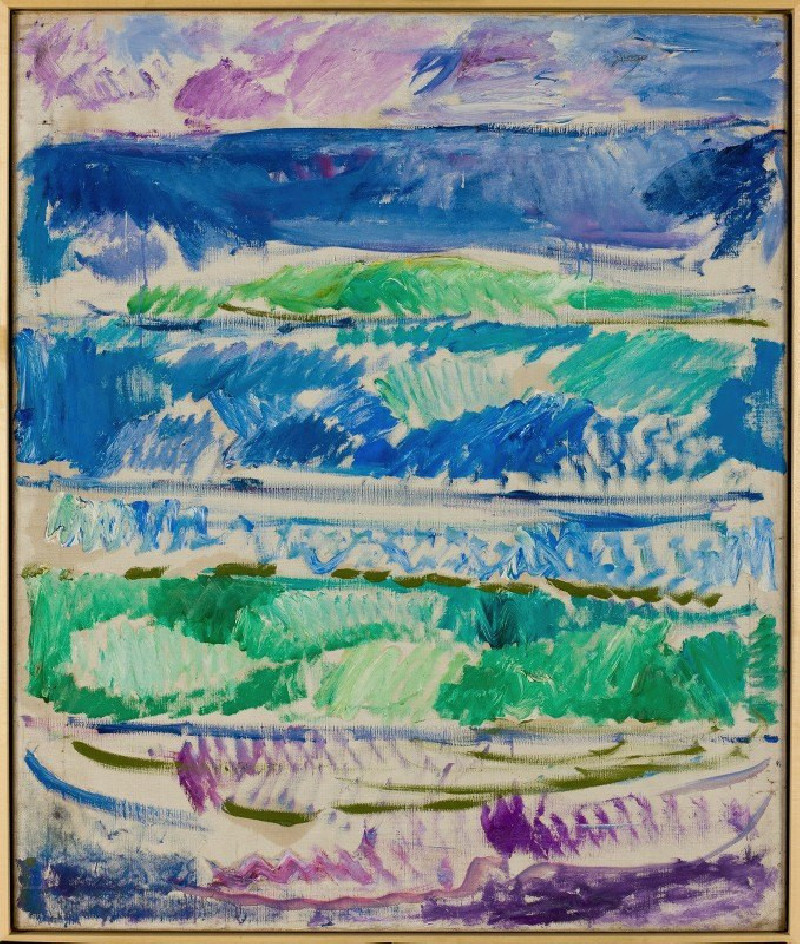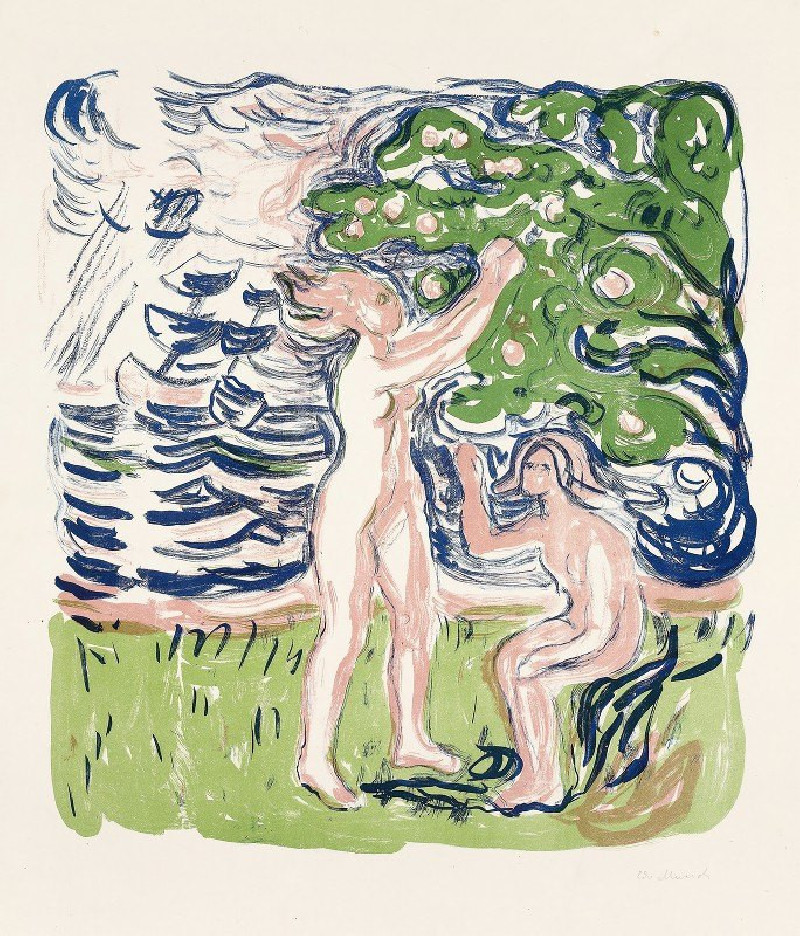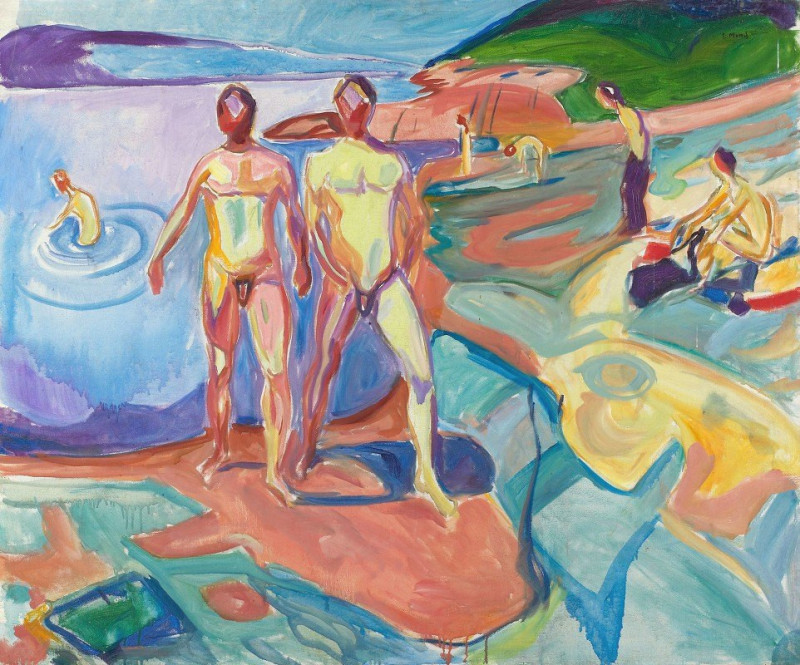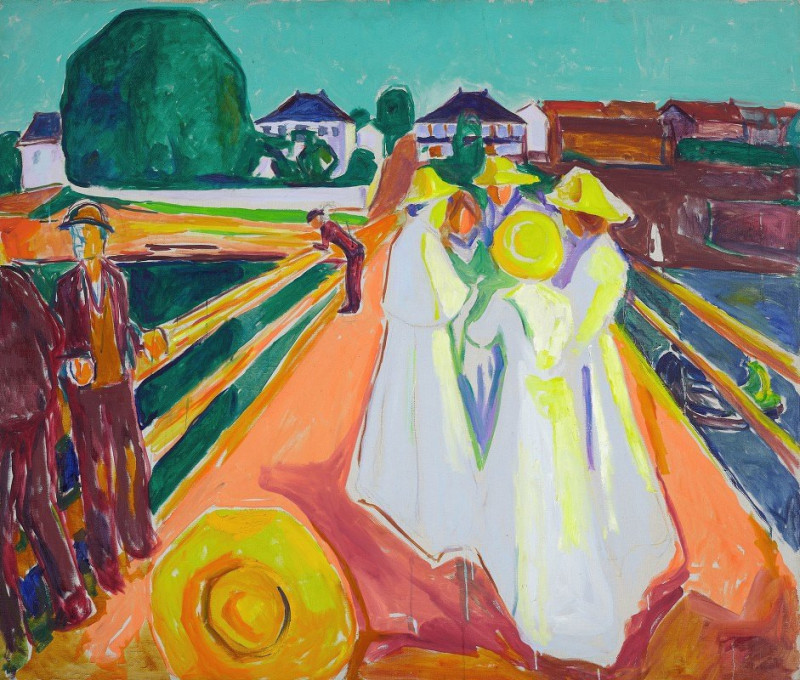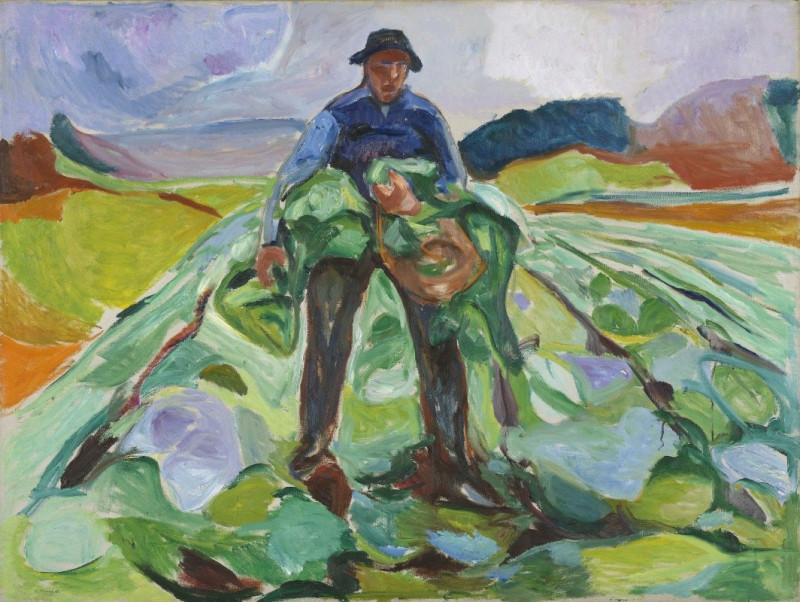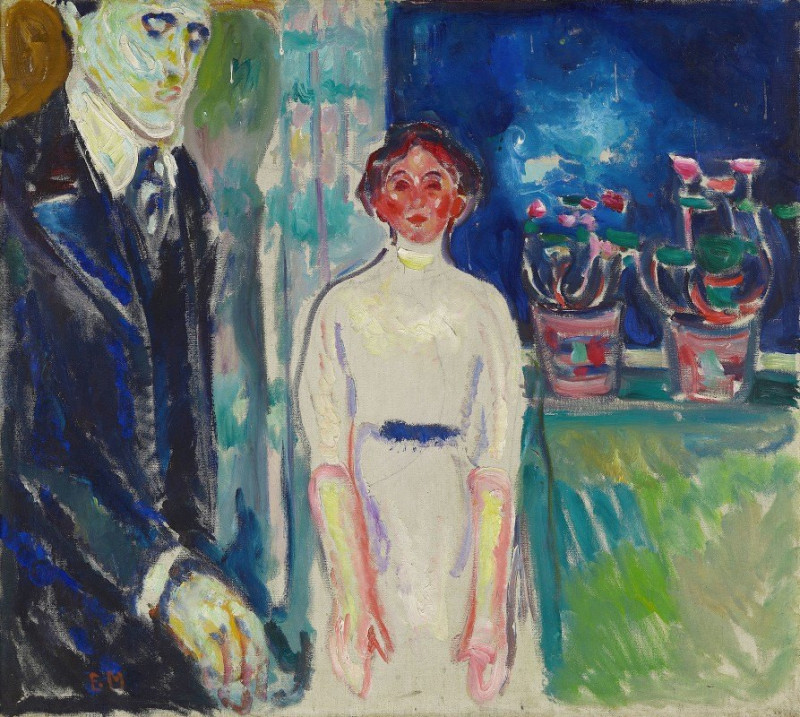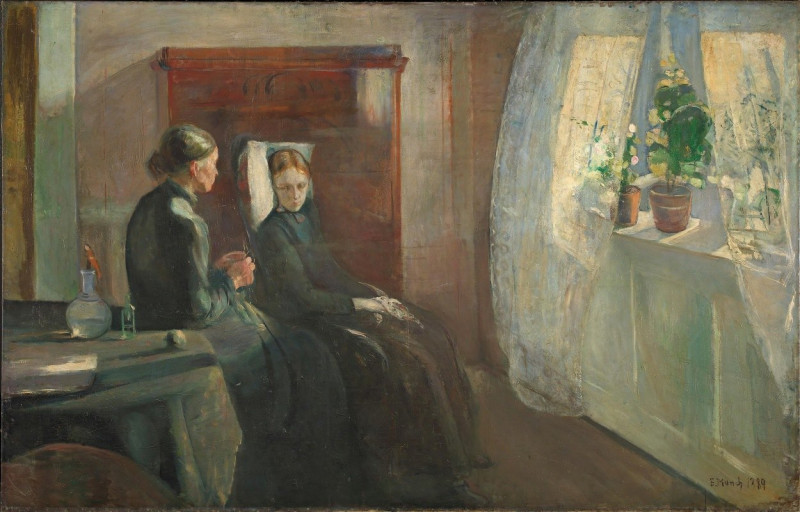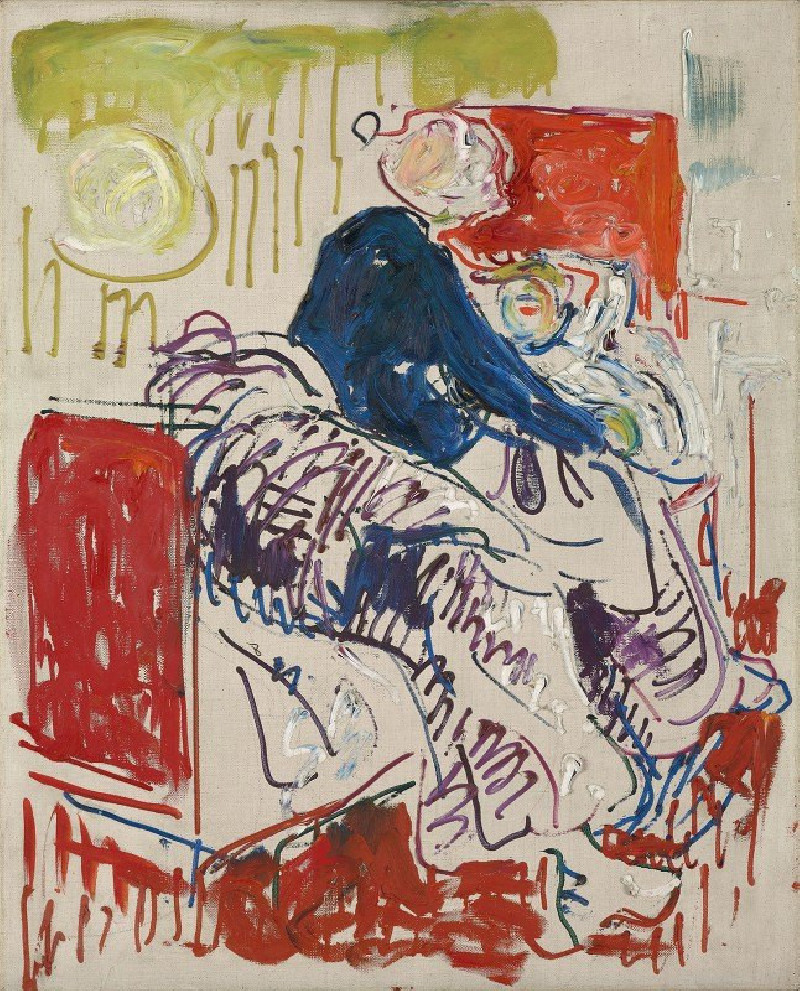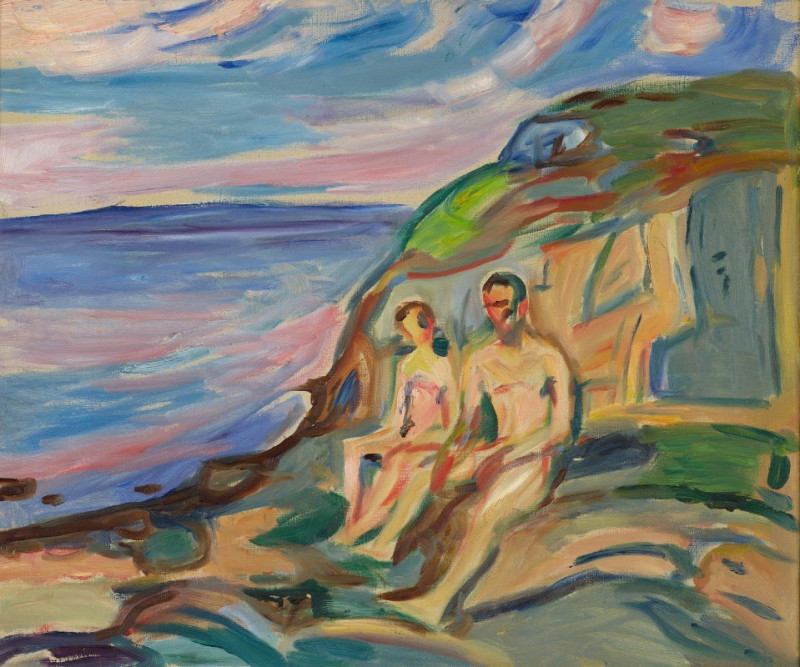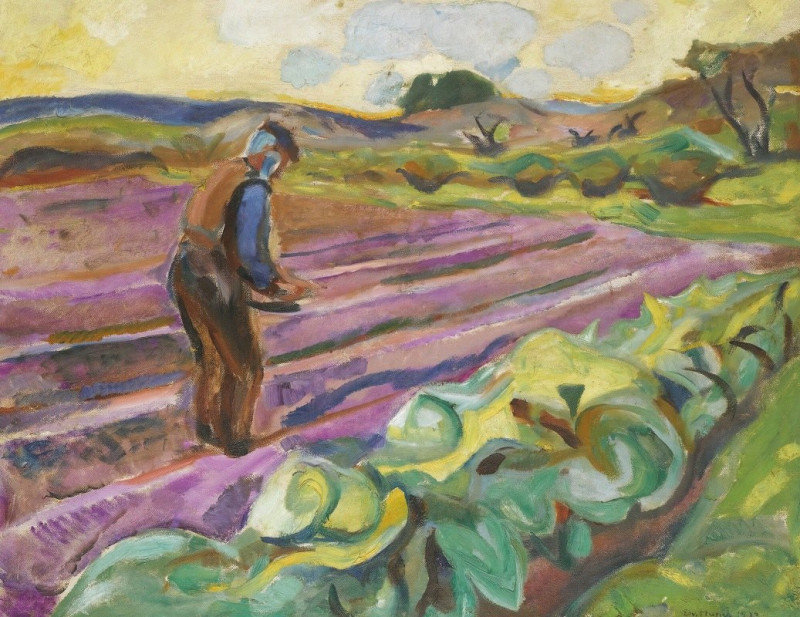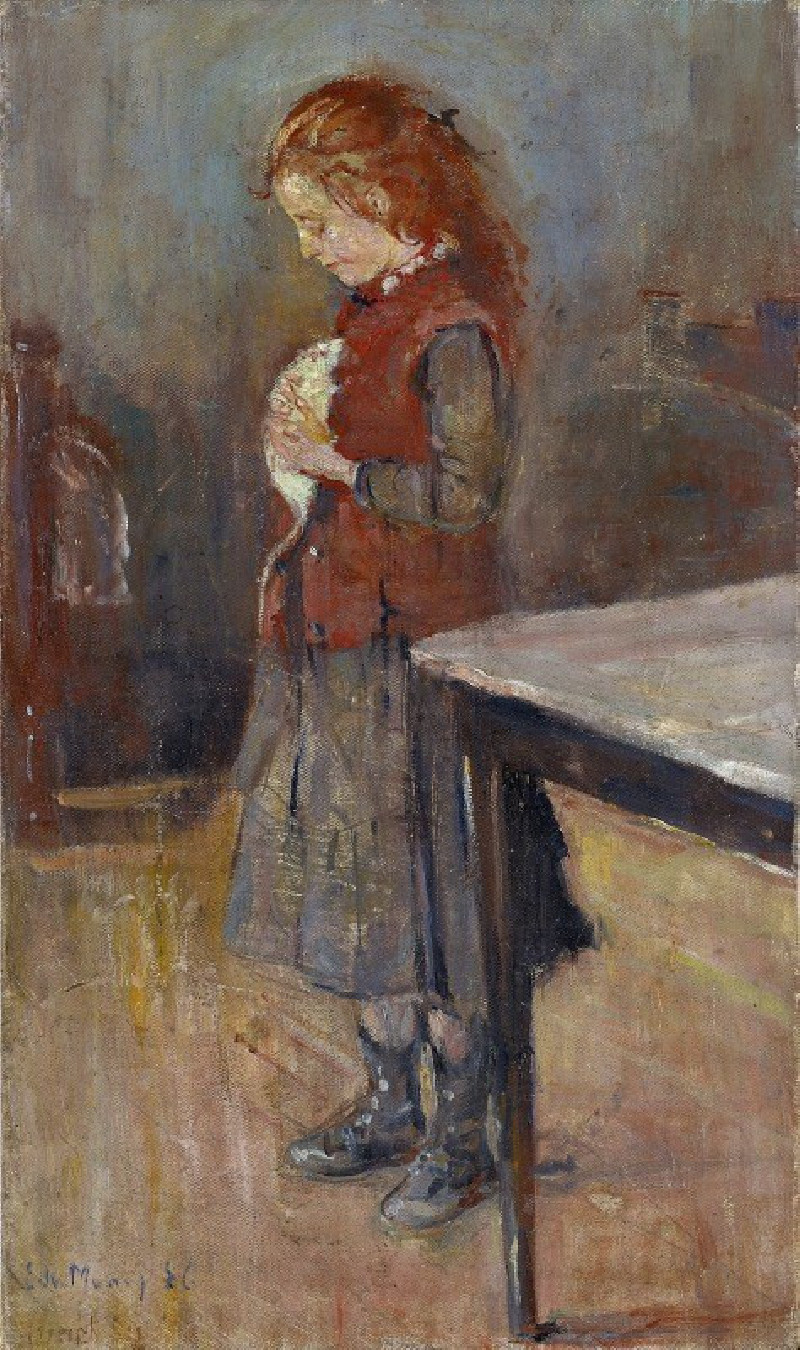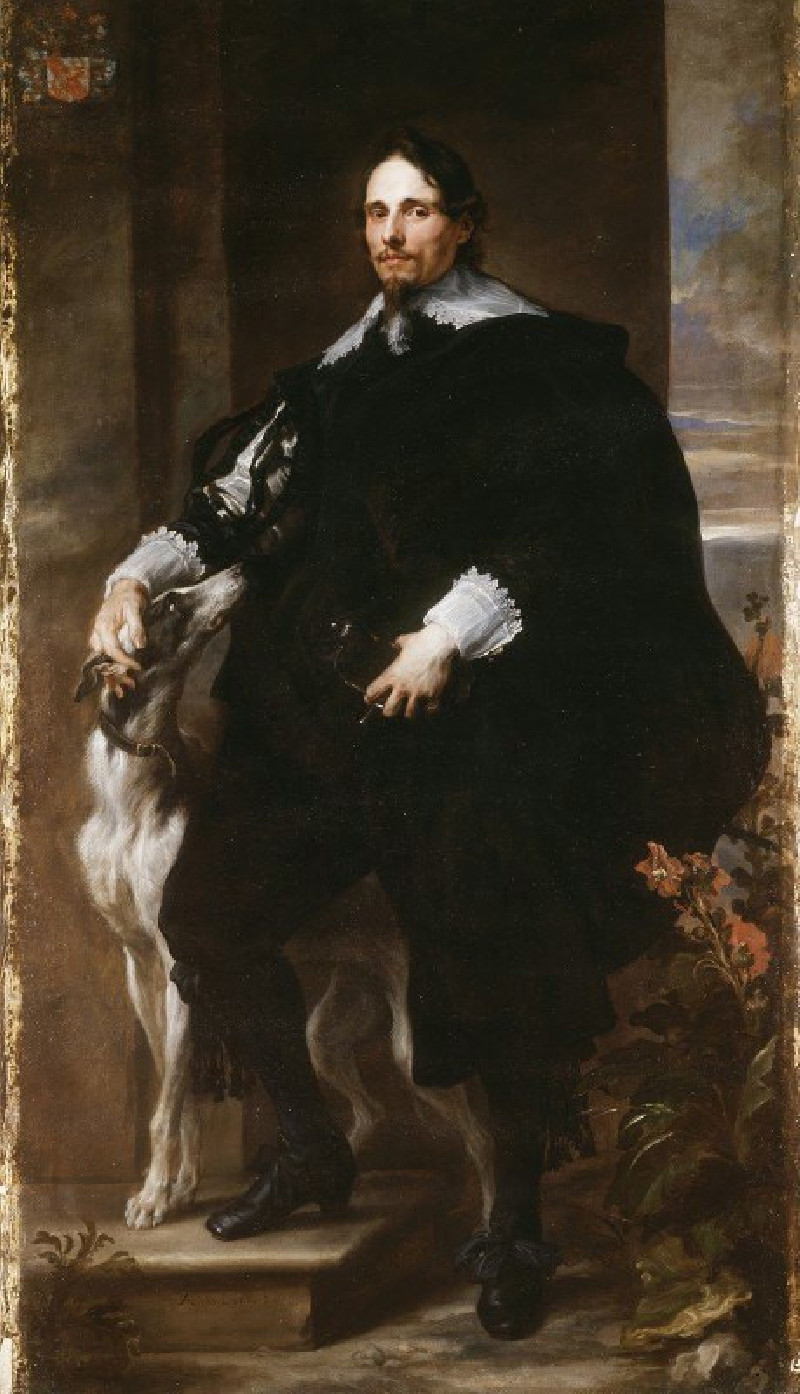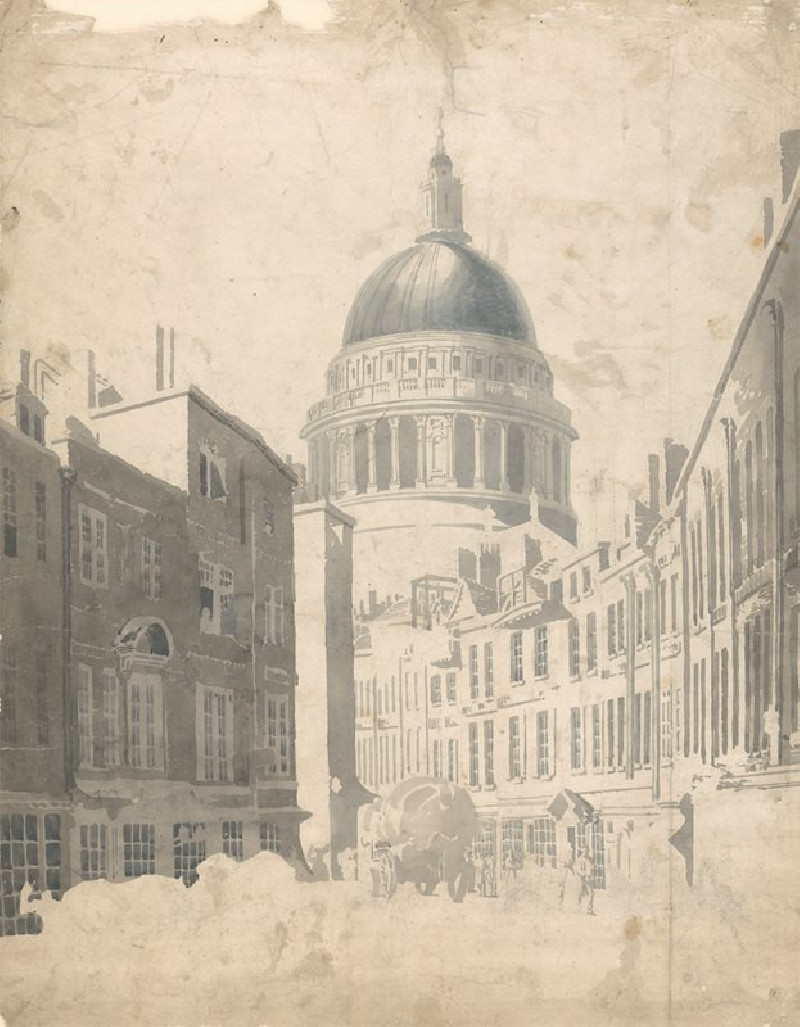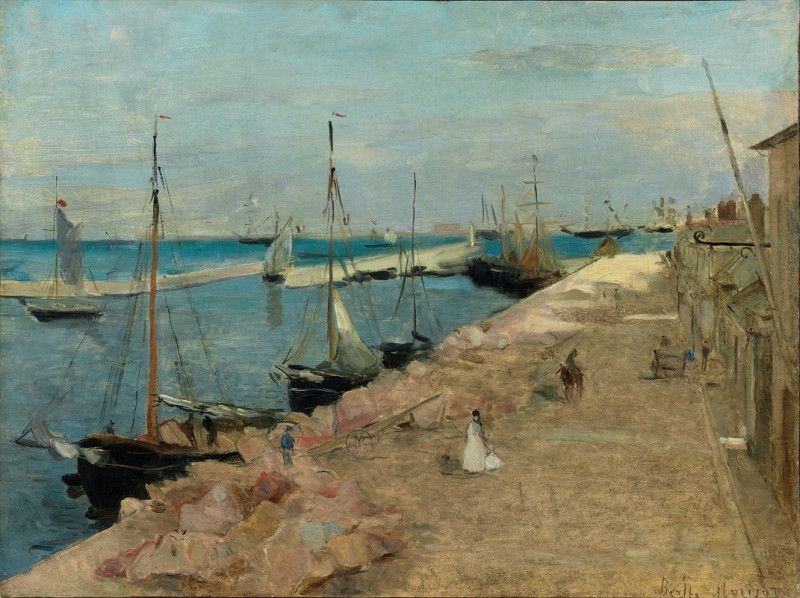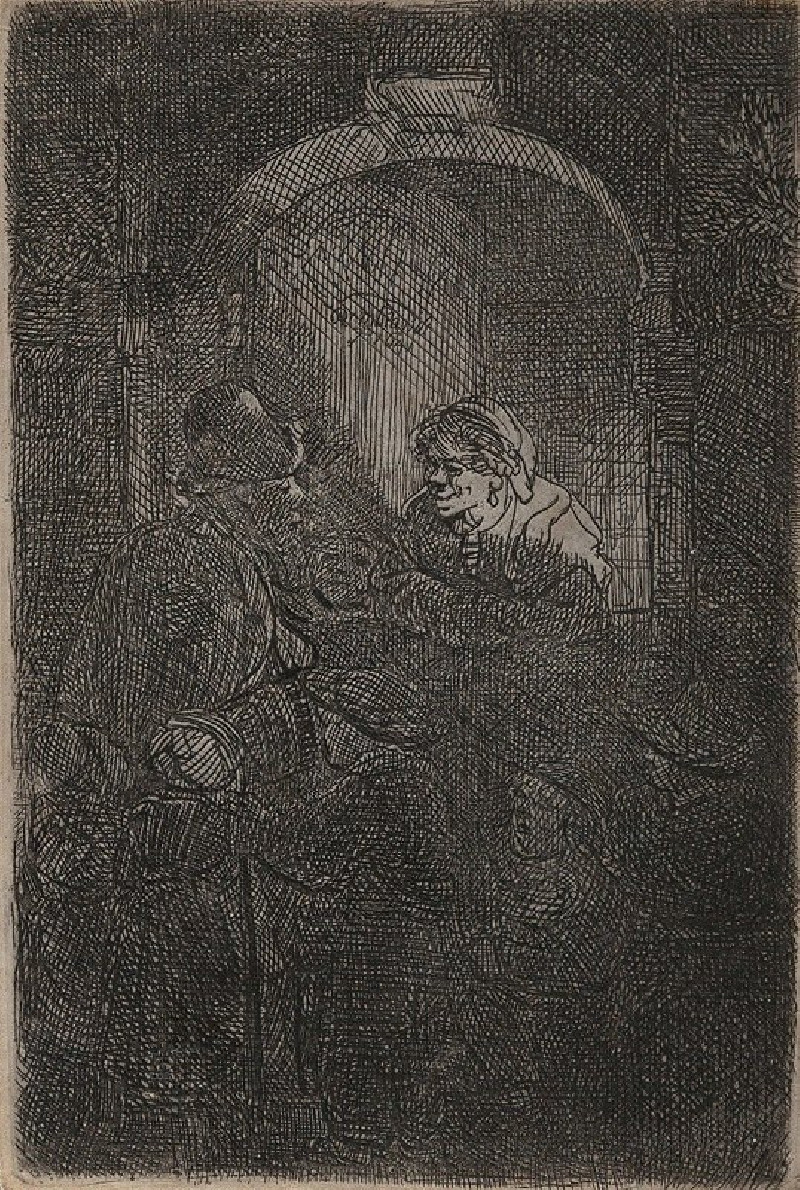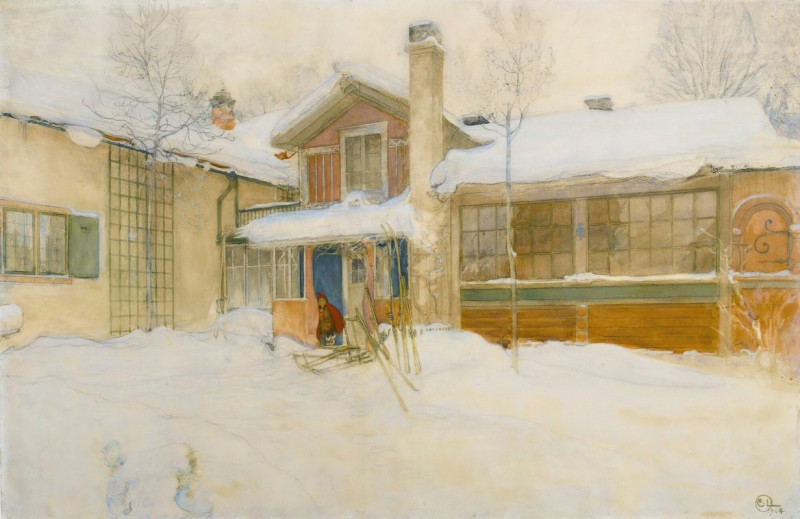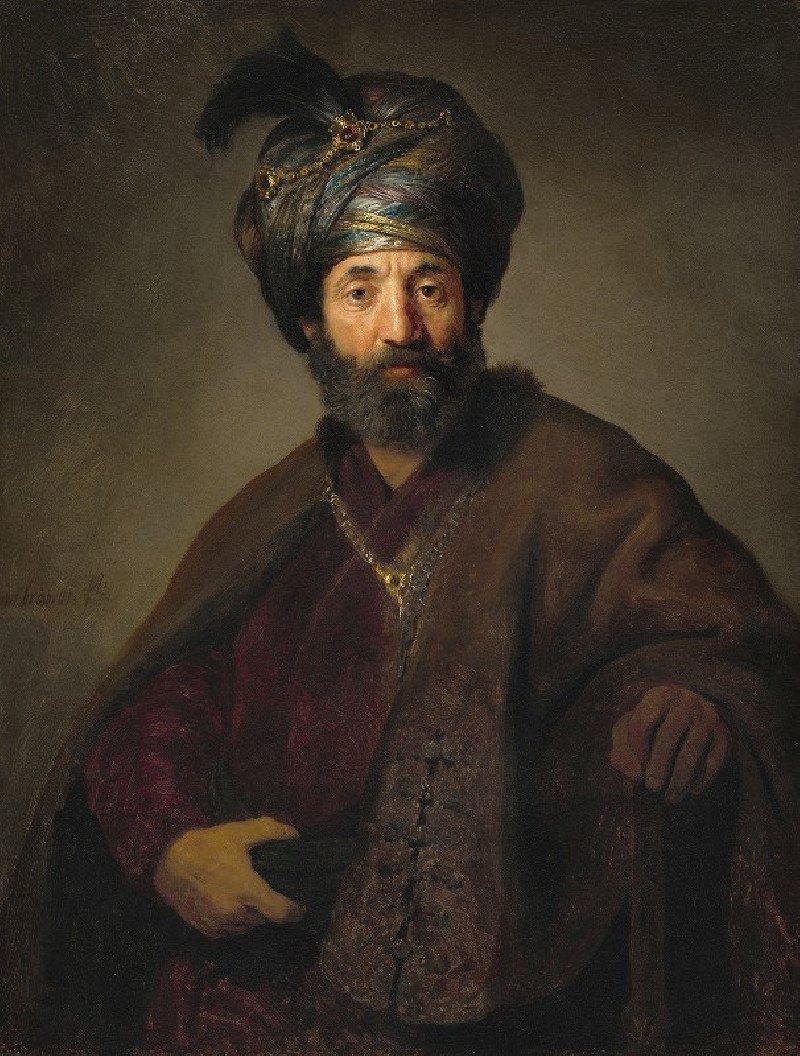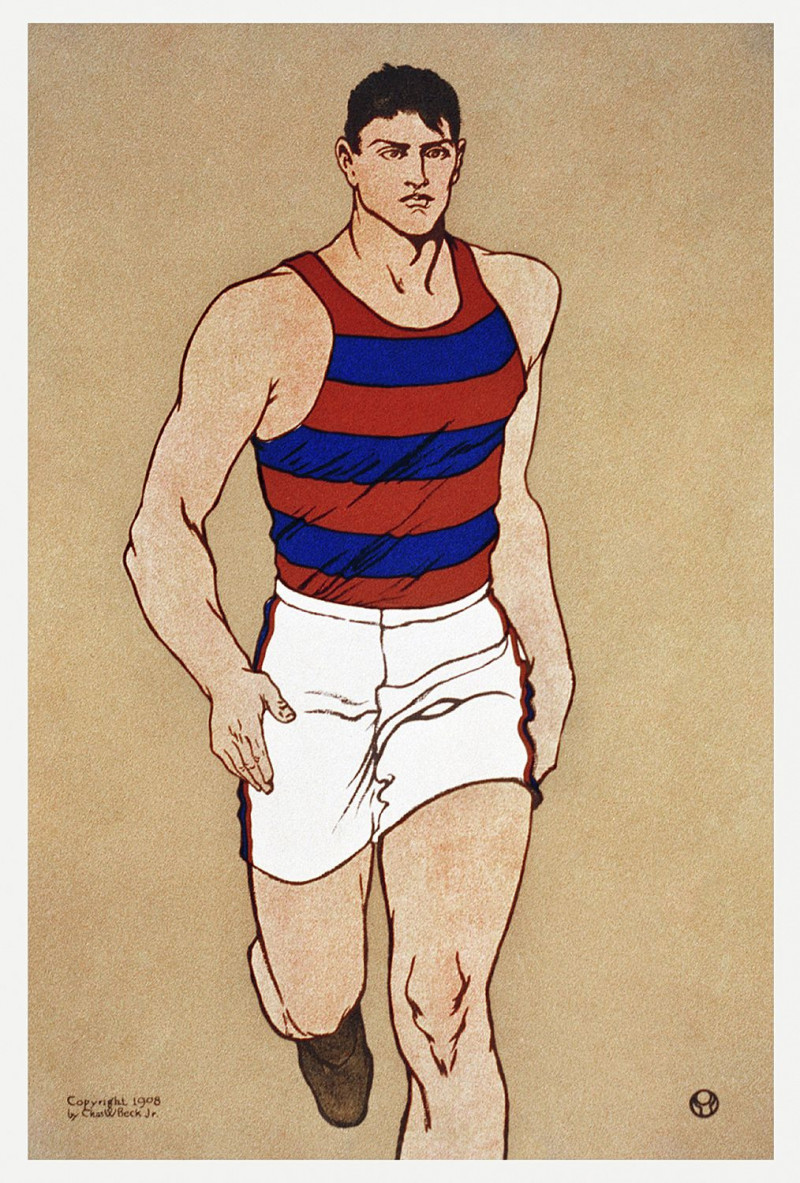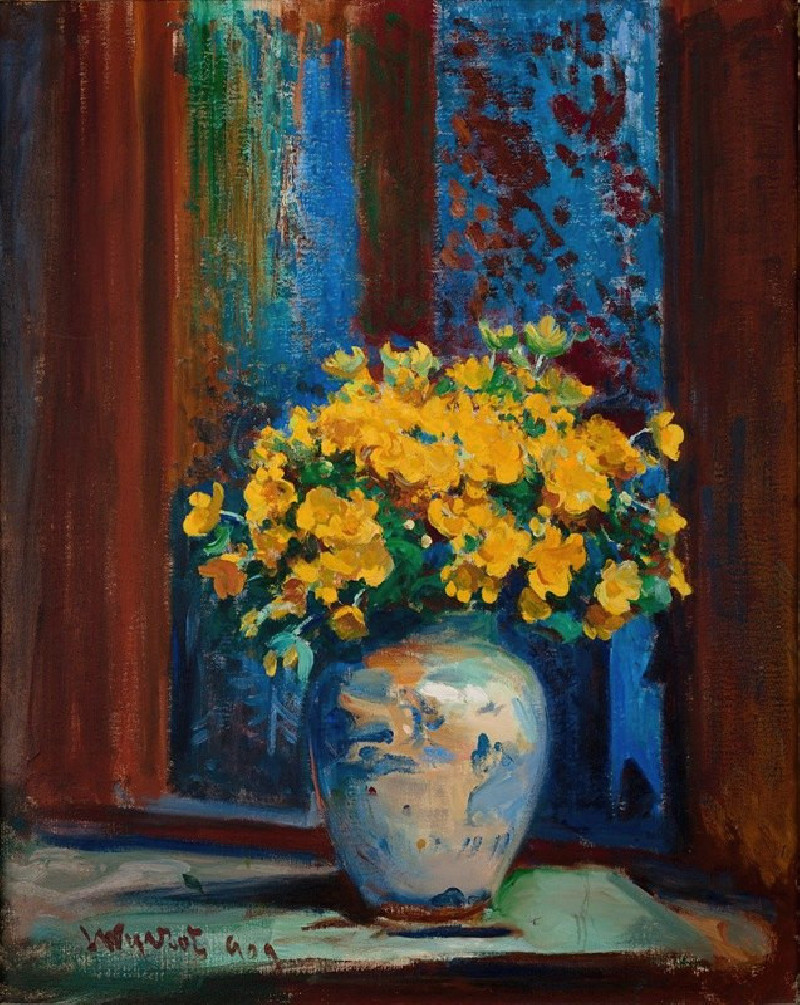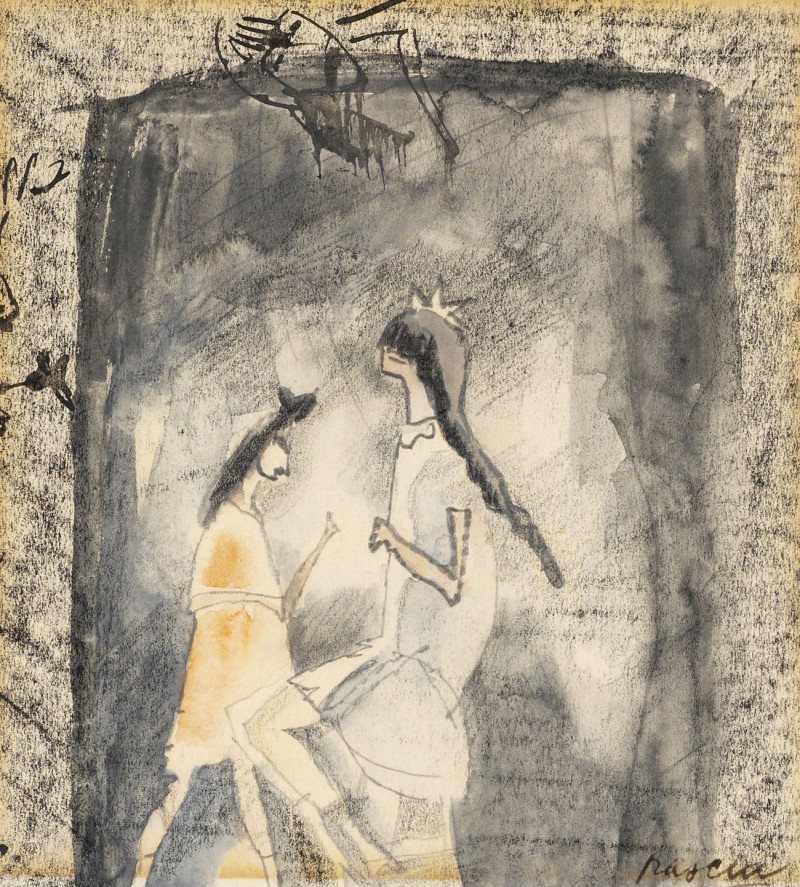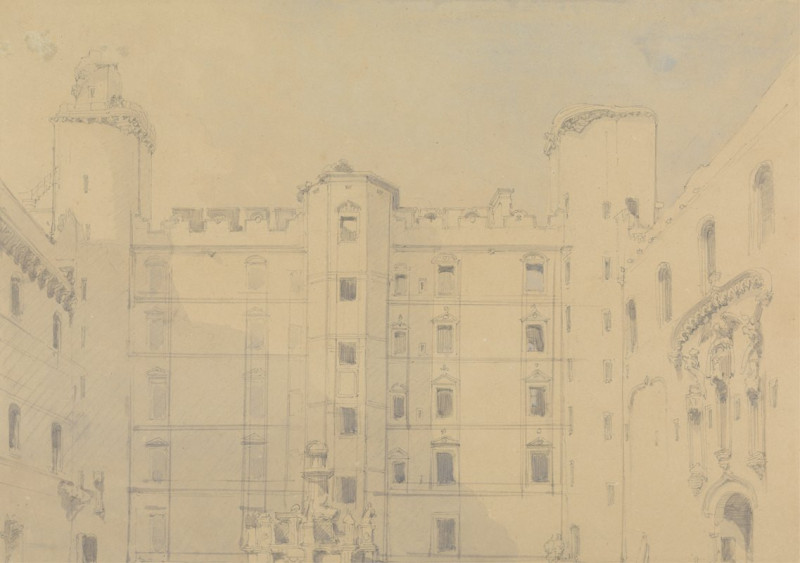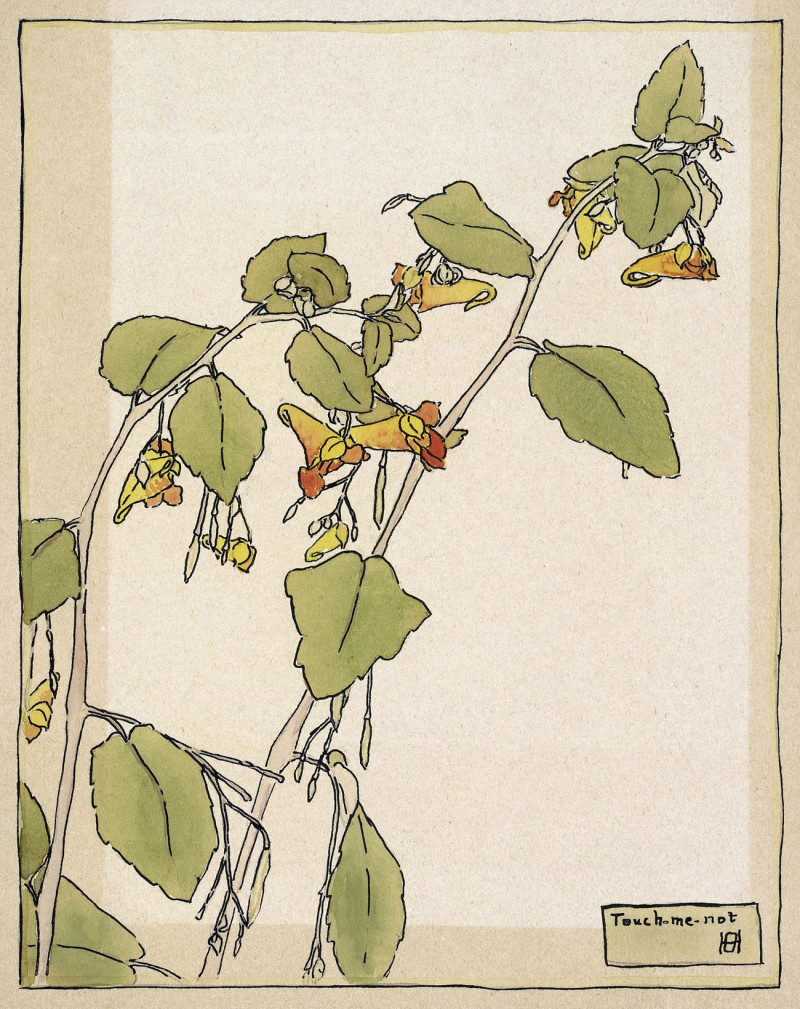Boys Bathing (1899)
Technique: Giclée quality print
Recommended by our customers
More about this artwork
This vibrant painting by Edvard Munch, entitled "Boys Bathing," created in 1899, captures a lively scene of youthful exuberance and the carefree spirit of summer. The artwork is defined by its bold, graphic style and a harmonious palette of greens and yellows, which brings out a sense of warmth and sunlight.The composition features three figures engaged in the act of bathing in what appears to be a river or a lake. To the left, two boys can be seen cavorting in the water. One is depicted in a diving pose, his body stretched out in a dynamic, almost floating gesture, with arms wide open, suggesting movement and freedom. The other boy appears closer to the bank, playfully positioned, with his arms and legs spread out, mimicking the other's diving form but from a shallower perspective.On the right, standing on a rock and closer to the viewer, is another boy, who is striking a pose that suggests he is either preparing to dive or is simply overseeing the activities in the water. Unlike the others, who are depicted in the act of playful swimming, this figure is standing, lending a balancing visual element to the composition with his vertical posture. His figure casts a strong shadow on the rock, emphasizing the brightness of the sunny day depicted.The background is simplistic, focusing on the rippling texture of the water and the sky, enhancing the figures and their activities without distraction.
Delivery
Returns
Edvard Munch (12 December 1863 – 23 January 1944) was a Norwegian painter. His best known work, The Scream (1893), has become one of Western art's most iconic images.
His childhood was overshadowed by illness, bereavement and the dread of inheriting a mental condition that ran in the family. Studying at the Royal School of Art and Design in Kristiania (today's Oslo), Munch began to live a bohemian life under the influence of the nihilist Hans Jæger, who urged him to paint his own emotional and psychological state ('soul painting'); from this emerged his distinctive style.



